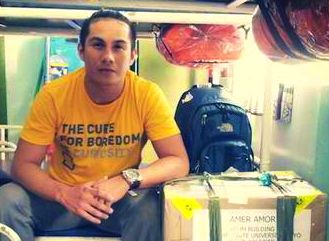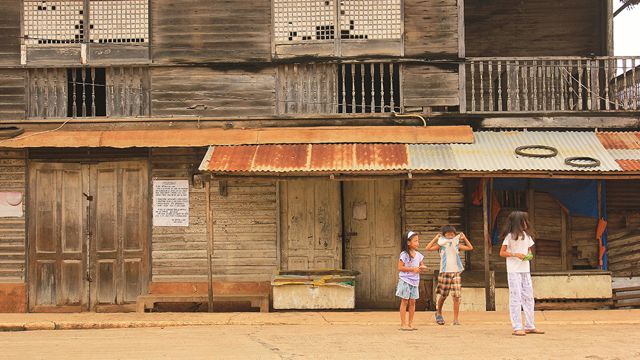SUMMARY
This is AI generated summarization, which may have errors. For context, always refer to the full article.
 Cuyo holds sweet surprises for those who brave the rough ride to the island.
Cuyo holds sweet surprises for those who brave the rough ride to the island.
Nestled between mainland Palawan and Panay Island, Cuyo is not your usual destination. The trip to the island tests a traveler’s patience and enthusiasm. On a fair weather, it will take two days by ship to get to Cuyo from Manila. The more popular alternative is to fly first to Iloilo or Puerto Princesa, then take the grueling 12-to-18-hour ferry ride from these jump-off points.
It was a good thing I wasn’t my traveling self when I went to Cuyo last year. If I was, it would have been a lot easier to just turn my back on conquering the island when the ferry I took decided to go back to Iloilo 3 hours into its trip.
The heightened monsoon rain in the country during the first week of August last year made it almost impossible to travel to the island, delaying trips from Iloilo for 5 days.
UPCAT mission
My co-regional examiner and I were on a mission and had a deadline to beat. We needed to be in Cuyo in time for last year’s University of the Philippines College Admission Test (UPCAT).
The island is the most remote in all of UP’s testing centers and the farthest in terms of travel time. It is also one of the testing centers with the smallest number of examinees.
With two boxes full of test materials, we jumped on the opportunity to travel to Cuyo one Friday night, so we could still administer the exam on Sunday, not minding the fact that we will have to miss our flight back to Manila on Tuesday.
We did not even realize that we boarded the smallest of the 3 ferries that ply the Iloilo-Cuyo-Puerto Princesa route. We desperately needed to be there in time for the exam, especially since we learned that some students who traveled 3 hours by pumpboat from the nearby islands were already in Cuyo.
I am really glad we made that trip because aside from the fact that the number of examinees in 2012 increased to 31 from just 19 in 2011, the trip strengthened my faith in the Filipino people and reinforced my belief that some of the happiest Filipinos indeed live in Palawan.

Simple life
Cuyo’s greatest strength, and its reward to those who travel to the island, is its people. The warmth of their hospitality makes the town extra-special, and the humble manner in which they live their life is both remarkable and inspiring. They understand and respect the simple life. Commercialism is a concept that, even if not unheard of in the town, does not have a place in the island.
When I walked around the town for the first time at 6:00 am, I was surprised to realize I could count on my fingers the number of people who were out in the streets. Except for that sari-sari store that also doubled as a bakery, all the other establishments around were far from starting business that day.
There were no eateries bustling with people or merchants busy preparing their wares for the day, which I normally encounter at this time in most of my travels around the Philippines. To think that it was a Monday.
On that same morning, at around 6:40 am, I saw two little girls crossing the street and knocking on the door of a really old house.
Out came a little boy, who was obviously just gotten out of slumber, and together, they crossed the street back to where the two little girls came from. Just when they were crossing the street, another boy, garbed in his well-ironed high school uniform, passed by the old house.
When I walked again the next morning, I saw the same sight – exactly as it happened 24 hours ago. Oh, the enviable unhurried simple life. You certainly do not run out of that in this island.

High regard for education
I later learned that the two little girls regularly wake up their brother who sleeps at their aunt’s house so that they could prepare for school together. They don’t want to be late for their classes, Tricia, the eldest of the 3, told me.
The people of Cuyo – Cuyonons as they are called – certainly have a high regard for education.
Nanay Elvie, the owner of the humble lodging house where we stayed, sent her 4 children to Manila to attend college, while the youngest is finishing his degree in Puerto Princesa. She said education is something that is highly valued in Cuyo. She worked hard to help them earn their college degrees. She now has an engineer and a nurse in their family.
The small town of Cuyo comes to life when students start to leave their houses for school. There is a certain grace in the way they move, certainly not a hint of busyness. There is a harmonious rhythm to it that is so peaceful to look at. While some slowly walk to school, some leisurely bike, others drive their motorbikes – all in a relaxed fashion.
Aside from public elementary and high schools, there is also a private school in town that has been around since 1932. Palawan State University (PSU) also has a campus in Cuyo, attracting college students from nearby islands and provinces.
Warm hospitality
All the other regional examiners who had been to the island before us only had kind words for the people of Cuyo. I also experienced that kind of warm hospitality during my visit.
The teachers we met toured us around to give us a glimpse of life in the island. We were grateful they did because we saw the beauty of Cuyo – from the charming Capusan beach, which is perfect for sunset-watching, to Tabunan, Cuyo’s pier built by the Spaniards in the 17th century with only the biggest volcanic rocks that abound in the island.
And just when we were about to leave our lodging house, they dropped by our place to hand some bags of cashew nuts, not just for me and my co-regional examiner, but also for the other regional examiners who went before us. The owner of the lodge where we stayed even prepared some pork adobo and fried chicken for us.
It was a little token of appreciation for enduring the rough ride to Cuyo and for taking that sacrifice just so we could reach out to their students, our hosts told us.
We were speechless and humbled by their generosity. When the ferry finally left Cuyo, I felt a sense of contentment that I have not felt for quite a long time.
Cuyo is that amazing journey that is hard to come by these days. I will be back. I am sure about that. – Rappler.com
Amer R. Amor is a faculty member of the University of the Philippines in Baguio. He is an UPCAT Regional Examiner.
Add a comment
How does this make you feel?
There are no comments yet. Add your comment to start the conversation.